Charger 4Sevens Single Bay V2
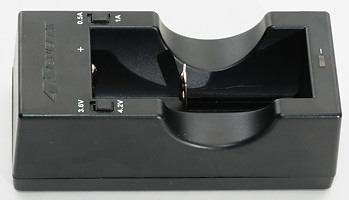
This charger was introduced in 2011 together with a new battery from 4Sevens, but due to a problem with the V1, it was recalled and later this V2 introduced. The charger has one bay and can only charge a single cell at a time, because the charge rate and voltage can be adjusted it can charge a large selection of different sizes cells.
I have listed the differences between the recalled charger and the new charger
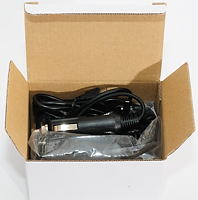
The charger arrives in a white unmarked card board box.

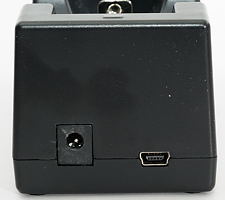
Here the two switches can be seen. The voltage switch is used to select the correct charge voltage depending on chemistry, the current switch is used to select current, depending on cell size/capacity. The switches has a very short travel.
The charger has connectors for 12 volt DC and for USB power.
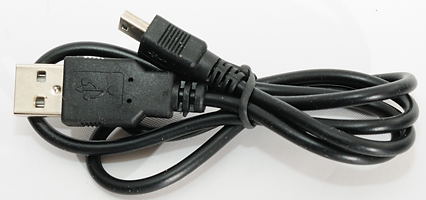
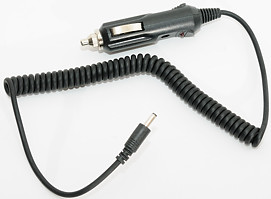
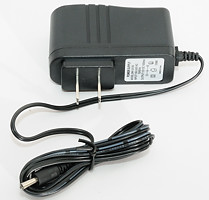
The charger is supplied with leads for 3 different power sources. The mains power supply is universal voltage (100-240 VAC, 50/60 Hz). The car adapter needs a socket with 21 to 24 mm diameter. Using the usb power adapter the charger cannot charge at 1 ampere, but at a lower rate.
The led is red when charging, both with 170 mA and 0.5A/1A and green at all other times.







The charger can handle 70 mm long batteries, and both button and flat top cells. Due to the design of the slider it is possible to place a battery in the charger without it getting a connection, this is not a real problem, just check the led changes to red, if not move the battery a bit.
Measurements
At low voltages the charger will try a short pulse each second, this will reset any tripped protection.
Between 1.0 volt and 3.0 volt it charges with 170 mA.
Between 3.0 volt and 3.6/4.2 volt the charger is applying regular charge current with constant current (either 500 mA or 1 A), when 3.6/4.2 volt is reached it uses a constant voltage charge.
The charger stops when the current has dropped to about 160mA.
When the battery goes above 3.6/4.2 volt or the charge stops the current is turned off (discharges with up to 35 uA current).
The charger will restart if the battery voltage goes below 3.45/4.11 volt, the power has been interrupted or the battery is replaced.
When charger is disconnected from power, but with a battery in, it will draw below 35 uA from the battery.
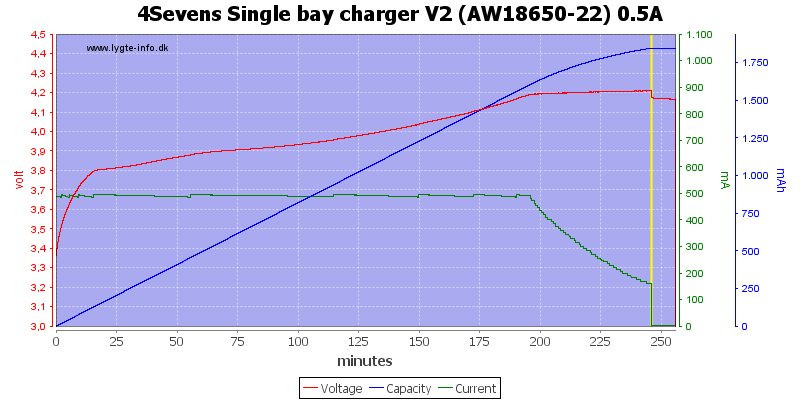
Charging a 2000mAh cell with 0.5A takes about 4 hours, first 3 hour with constant current and then 1 hour with constant voltage. The high termination current makes the CV part faster.
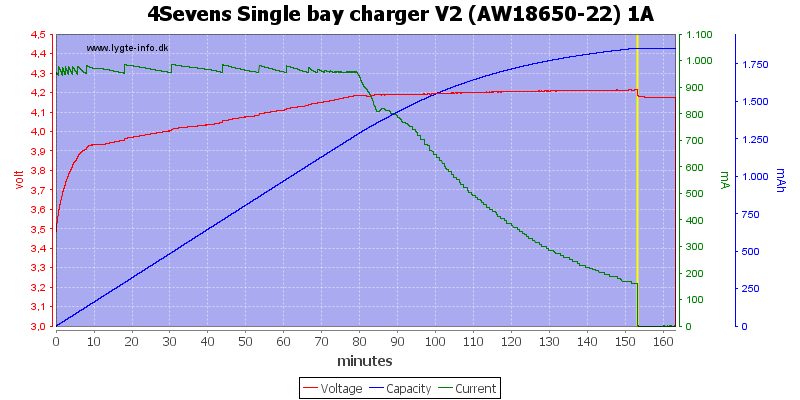
Increasing the current to 1A reduces the charge time to a bit below 3 hours. The CC phase is faster. Here it can also be seen that the CC/CV regulation is done by a microprocessor and not with a analog chip. The steps is the processor adjusting, analog would have been smooth.
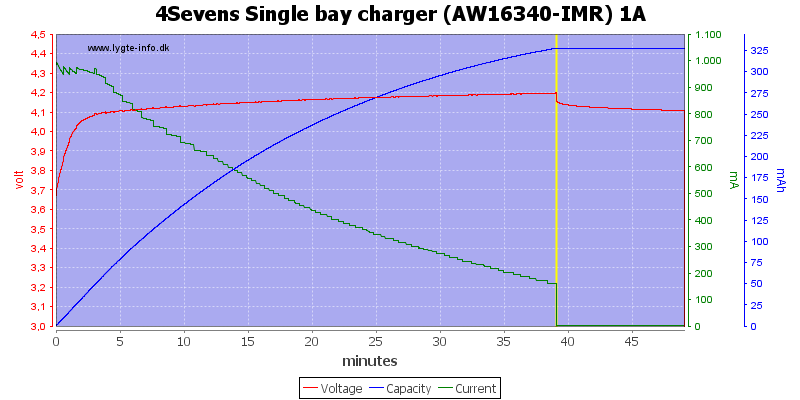
My old IMR cell is fast to charge on the 1A setting, but is not filled completely due to the high termination current.
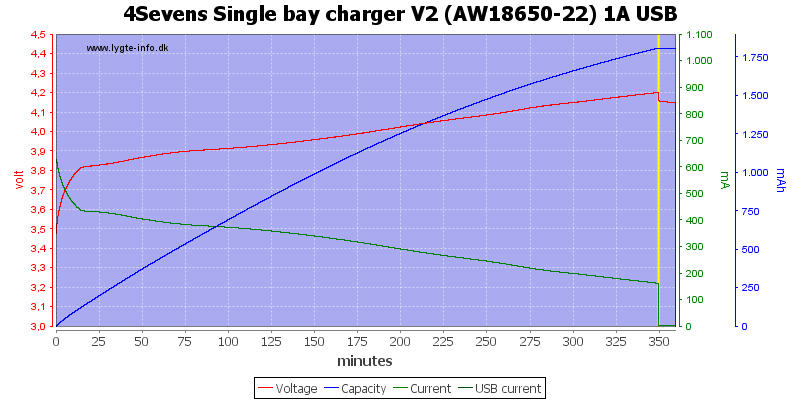
Here I am using USB power to charge a cell, the current switch is in the 1A position. The charger starts with a charging current of 700mA and uses a little bit more from USB. After 10 to 15 minutes the current is down to 500mA. If I had uses the 0.5A ampere setting, the current would have started at 500mA.
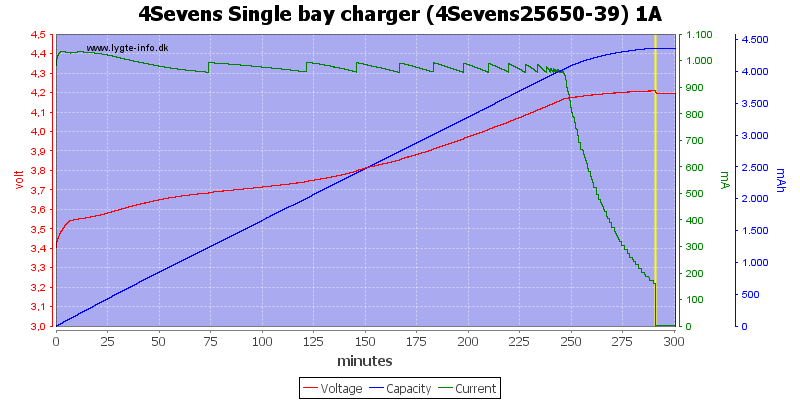
The 4Sevens 26650 battery takes about 5 hour to charge.
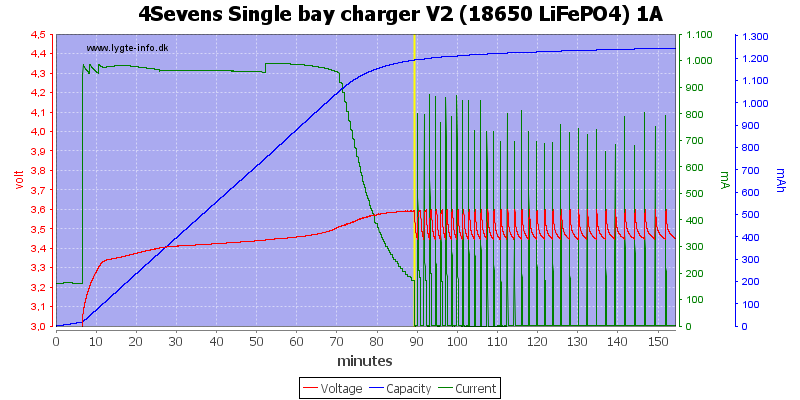
When charging a LiFePO4 cell with 3.6 volt termination voltage the charger also does a very fine CC/CV profile. It starts slowly, until the battery is raised to 3 volt, then it goes to full charge current. BUT it cannot handle the termination, it will terminate at 3.6 volt, but because LiFePO4 cell drops in voltage when charging is stopped, the charger will restart charging again.
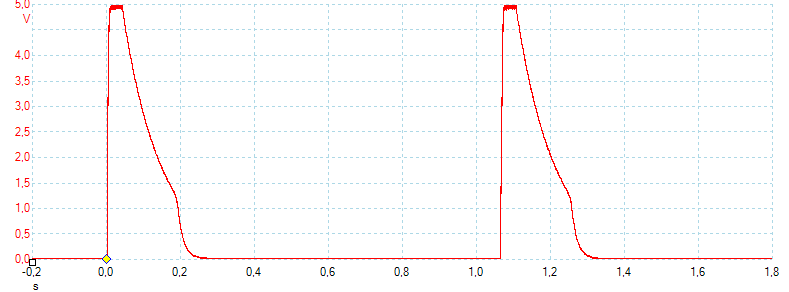
The pulses that will reset a protection circuit, measured without a battery in the charger. These pulses are limited to a peek current of around 180 mA.
Conclusion
This charger follows a CC/CV charging profile and also supports long 18650 cells and a lot of other cell types. This makes this charger a good charger, with only a few small detail, that could have been better. The high termination current does spoil it for cells with smaller capacity and LiFePo4 cells must be removed when they are charged.
For cells with more than 2000mAh capacity it is a very good charger, for cells with smaller capacity the high termination current will cost a few % in charged capacity, but give the cells a longer lifetime.
Notes
Here is an explanation on how I did the above charge curves: How do I test a charger
Some of the photos are from the V1 review, because I got the replacement charger without accessories.




















